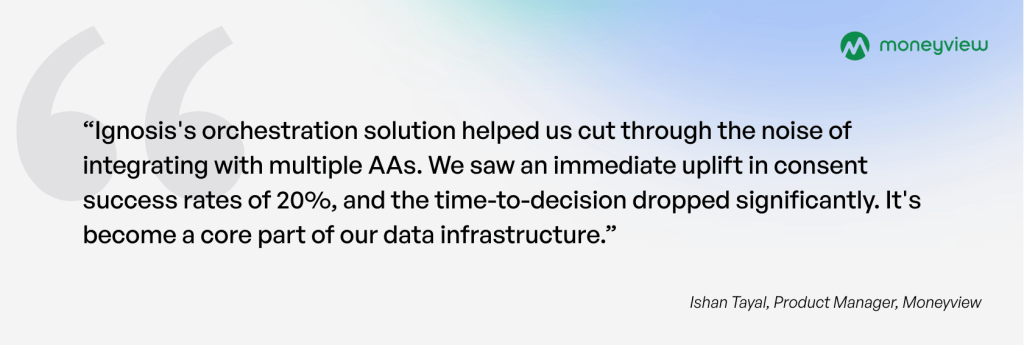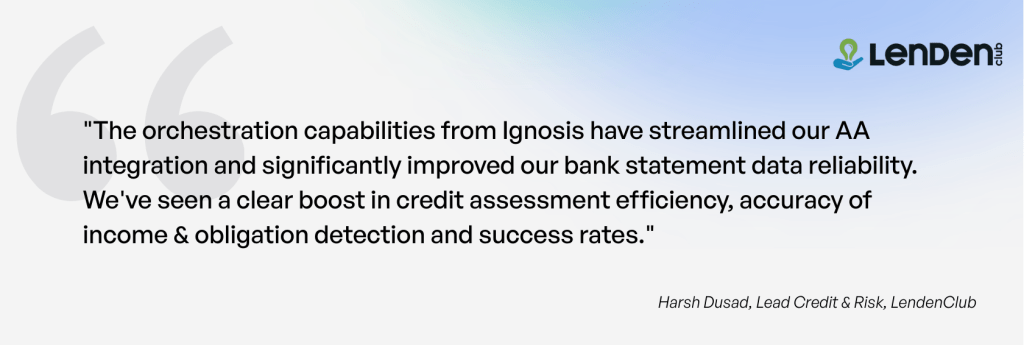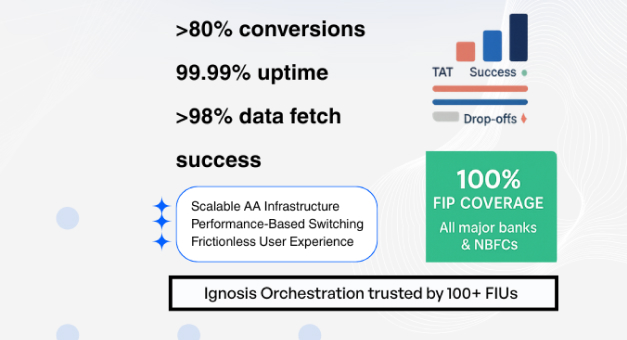AA Orchestration:
The Strategic Imperative for BFSI
As India’s digital financial infrastructure evolves, the Account Aggregator (AA) framework has emerged as a transformative force, enabling secure, consent-driven sharing of financial data between Financial Information Providers (FIPs) such as banks and Financial Information Users (FIUs) like lenders or wealth advisors. However, to realize the true scale and efficiency of this ecosystem, a critical technological player operates behind the scenes: the orchestrator.
What is an Orchestrator in the AA Ecosystem?
An orchestrator is a technology abstraction layer that connects FIUs to multiple Account Aggregators (AAs) through a single integration. Instead of building separate connections to each AA, FIUs integrate once with the orchestrator, which manages:
- Consent creation and management
- Data fetch operations across AAs
- Error handling and retries
- Latency optimization and routing
- Analytics and monitoring tools
This orchestration empowers FIUs to streamline development, significantlly improve conversions, reduce operational overhead, and focus on delivering intelligent, data-driven financial services.
Why is Orchestration Essential?
- Multi-AA Complexity: With numerous licensed AAs (e.g., NADL, Finvu, OneMoney, Anumati, Saafe AA, CAMS AA), each having unique APIs and operational nuances, an orchestrator abstracts this complexity into a unified interface.
- Reliability and Redundancy: When an AA faces downtime or latency issues, the orchestrator can reroute consent and data requests through alternate AAs to ensure continuity and higher availability.
- Performance Optimization: Orchestrators use real-time intelligence to route requests through the most efficient AA, maximizing success rates and minimizing response time.
- Scalability: FIUs can accelerate onboarding and expansion without needing to manage multiple individual AA connections.
- Centralized Reporting: Dashboards, logs, and real-time analytics help FIUs monitor performance, compliance, and operational metrics in one place.
Drawing Parallels: Payment vs. AA Orchestration
To understand the value of AA orchestration, it helps to look at the well-established domain of digital payments. Platforms like – Juspay orchestrate payment gateways, allowing merchants to route transactions based on success rates, fees, and reliability. Similarly, AA orchestrators like Ignosis facilitate seamless financial data exchange by optimizing routing, ensuring high success rates, and maintaining compliance.
Feature
Payment Orchestration (e.g., Juspay)
AA Orchestration (Ignosis)
Objective
Move money efficiently
Move data securely and reliably
Routing
Based on PSP/acquirer performance
Based on AA/FIP coverage and latency
Integration
One-time with orchestration layer
One-time with orchestration layer
Security
PCI-DSS, tokenization
RBI-AA compliant, encrypted data flow
Insights
Drop-off rates, PSP performance
Consent success, AA reliability
The Ignosis Advantage
Ignosis offers a powerful AA orchestration platform designed to:
- Enable seamless, one-time integration for FIUs
- Dynamically route consent and data requests for optimal performance
- Significantly improves conversions, data fetch success rates, and user experience
- Ensure full compliance with security and regulatory standards


As India’s financial data economy expands, Ignosis is poised to be the foundation that makes the AA ecosystem more scalable, resilient, and user-friendly.
Final Thoughts
Orchestration in the Account Aggregator ecosystem is more than a backend convenience — it is a strategic enabler of speed, stability, and scale. With the rising demand for secure, consent-based financial data, orchestrators like Ignosis will play a pivotal role in achieving the broader vision of financial inclusion and data intelligence in India.
To stay ahead in the data-driven future, every BFSI must activate AA through an orchestrator—there’s no alternative.
Want these results for
your lending stack?








